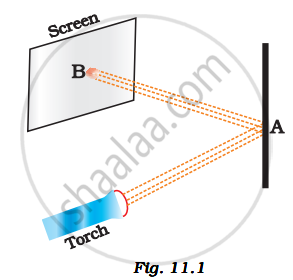Advertisements
Advertisements
Question
Explain the difference between a transparent, a translucent, and an opaque medium. Give two examples of each.
Solution
1. Transparent objects: Those objects through which light can pass easily are called transparent objects. e.g. Water, glass, air.
2. Translucent object: The object through which light can pass partially are called translucent object, e.g. tracing paper, waxed paper.
3. Opaque object: The objects which do not allow the light to pass through are called opaque objects, e.g. wood.
APPEARS IN
RELATED QUESTIONS
Write true or false of the following statement.
The moon is self-luminous.
Name two natural sources of light.
Differentiate between the luminous and non-luminous bodies. Give two examples of each.
Write the names of some transparent objects.
Fill in the blank
There are ........... and man-made ............ of light.
Answer the following.
Name some sources of light that are not hot.
When a ______ object comes in the way of light, light passes ______ it.
The path of the light is called as ______.
List any five properties of light.
Observe the picture given in Fig. 11.1 carefully.

A patch of light is obtained at B, when the torch is lighted as shown. Which of the following is kept at position A to get this patch of light?
